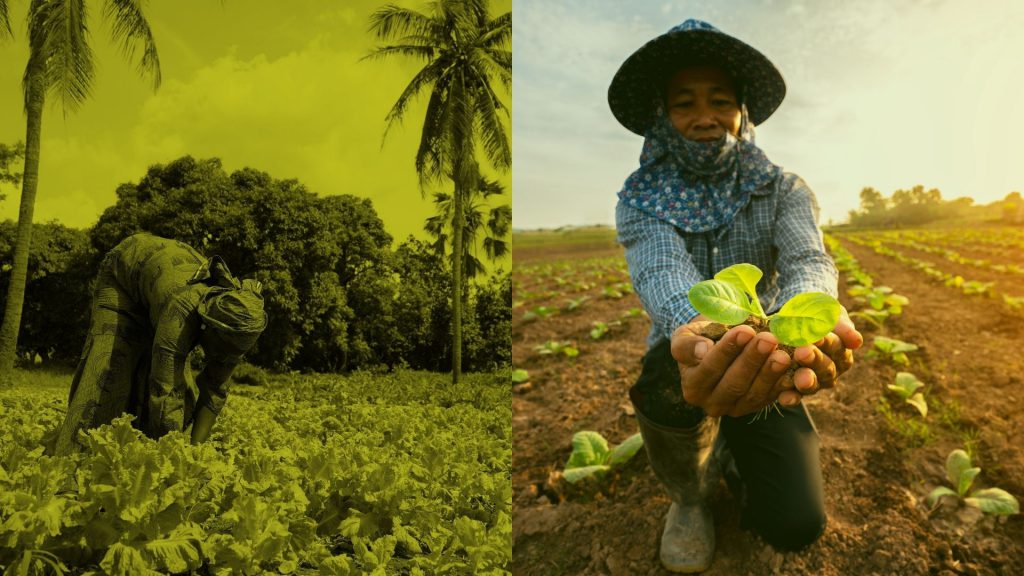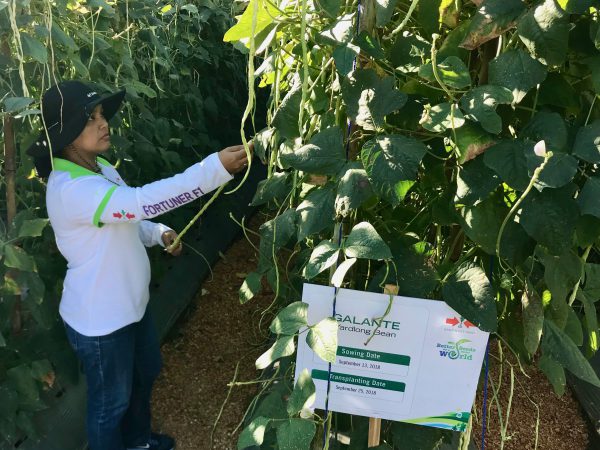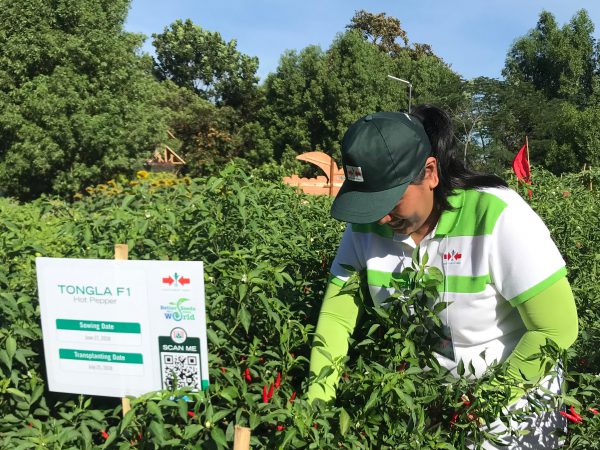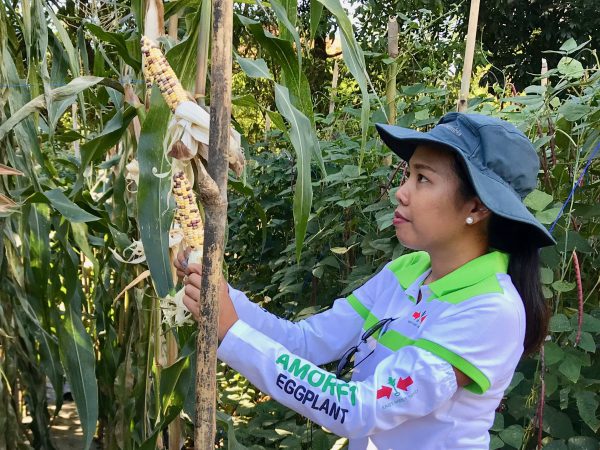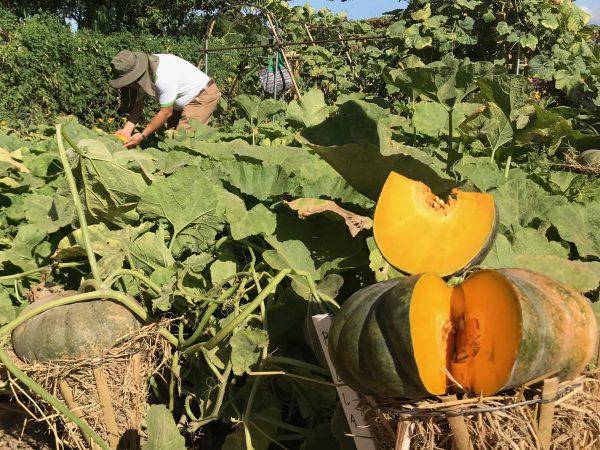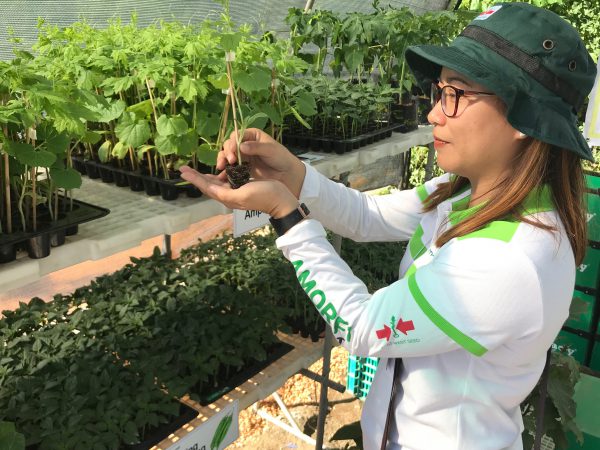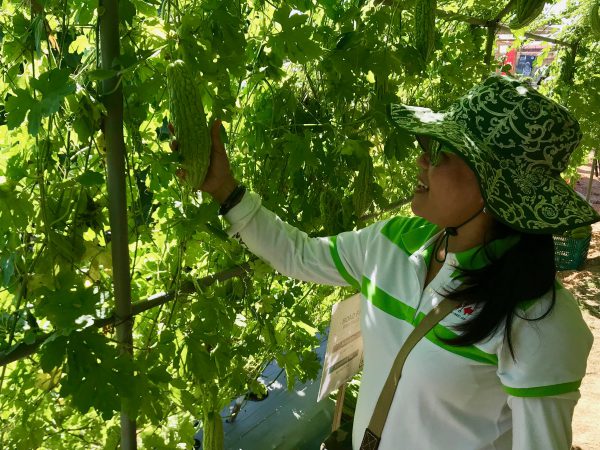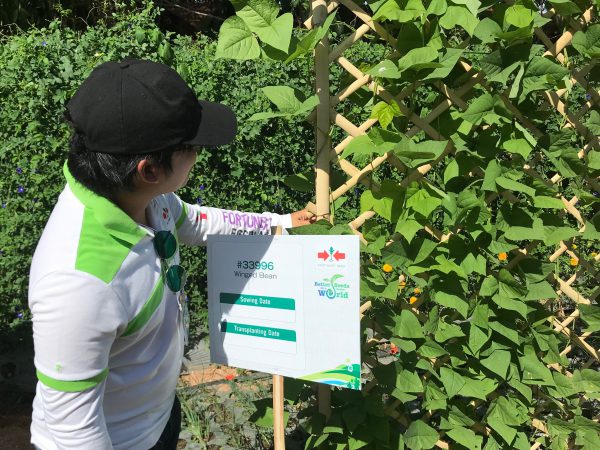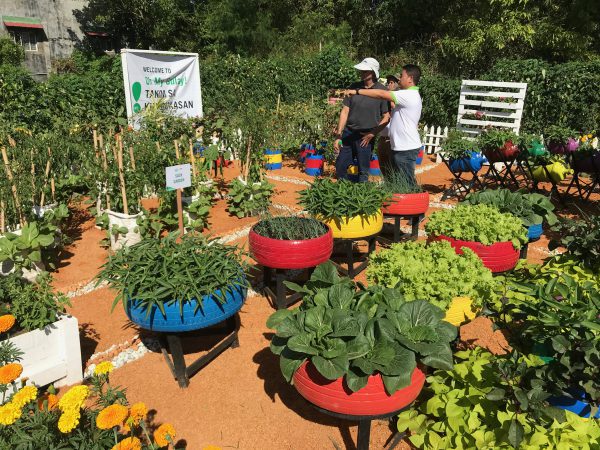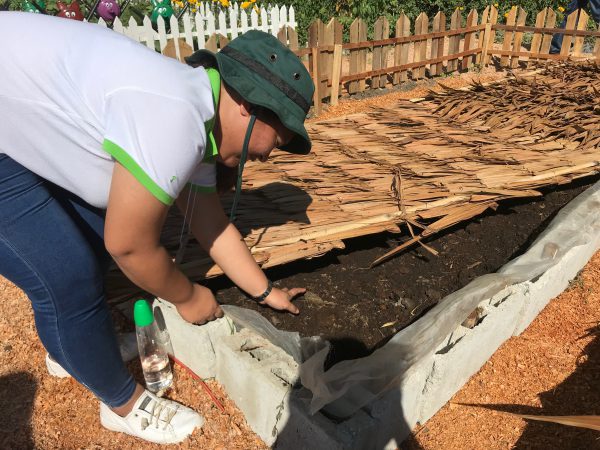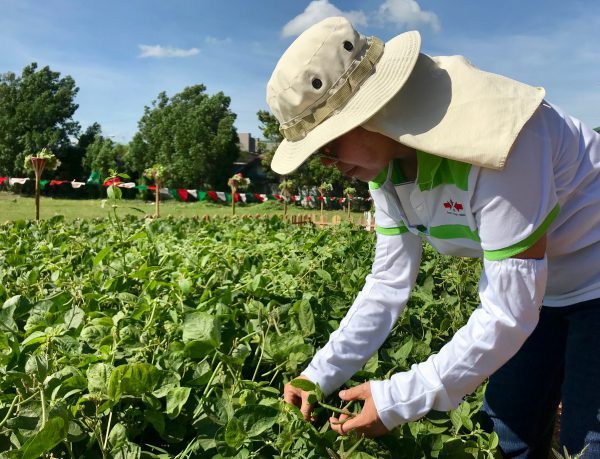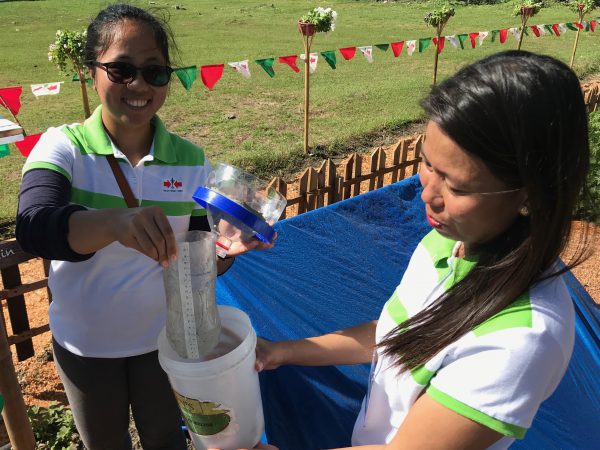Arlene D. Valmadrid, breeder for yardlong and green beans, is showing a yardlong bean. This local crop, also found in the portfolio of several other seed companies, gives the farmer multiple harvests over one to two months. Yardlong bean can also be grown in low altitude areas.
The Access to Seeds Index showed that drought tolerance is increasingly a breeding target for seed companies, to help farmers to adapt to the effects of climate change. Not just for field crops, but also for vegetables. Josephine Ramos, product testing coordinator of solanaceous crops, shows a new hot pepper variety that is drought tolerant and is bred for farmers working in rainfed areas which lack sufficient rainfall.
This new waxy corn variety not only contains more anti-oxidants, it also looks like it. Consumers associate bi-color corn with traditional varieties and the color purple with nutritious food. Gabrielle Parungao, sweetcorn breeder, explains that through these kinds of products the demand for healthy food can be met. As the corn is small, only 10 centimeters long, farmers can target it as a snack for schoolchildren.
Conrado Balatero, group breeding manager, here in a field of pumpkin, explains the challenges for breeders to develop a successful product. Farmers like a good yield and resistance against pests and diseases. Traders like a product with a long shelf life and that is easy to transport. Consumers like, in the case of pumpkin, taste, color and stickiness. A successful product combines all these traits, as does the East-West Seed pumpkin that is the main pumpkin sold in The Philippines, South India and Sri Lanka.
Glenda Cruz, logistics supervisor of Farm Ready, shows a seedling of bitter gourd sold by this new service of East-West Seed. By buying ready-grown seedlings, farmers can save two to three weeks. This can also be helpful as a recovery strategy after a typhoon. Farmers do not have to grow their own seedlings in a seedbed, but plant these seedlings right away and harvest earlier. Farm Ready adds value to the seedlings through grafting, providing additional resistance to the plant.
Maria Venus Salutan, breeder for bitter gourd and crop breeding manager, shows a bitter gourd grown on a grafted plant. Grafting is common for fruit trees and orchards, and is now also being introduced in the production of vegetable seedlings. By attaching a bitter gourd plant on the rootstock of another plant, the bitter ground can not only benefit from its own resistance against pest and diseases, but also of the resistance of the rootstock against root or soil related diseases.
Ralph, product development support assistant, shows a plant of winged bean. Winged bean is an indigenous legume that is a good source of nutrients. It also fixes nitrogen and it is therefore a good crop that farmers can use for intercropping. It is an OPV variety that farmers can re-use. Even though it is a crop that does not earn money for East-West Seed, it part of the sales portfolio and breeding program to allow farmers to use it for intercropping.
Boysie Sabino of East-West Seed Foundation, points to several techniques on display that the foundation uses to promote home gardening in cities and at public schools. Bags, old containers and even tires provide can be used to grow vegetables at home. By showing these examples and providing advice, the foundation aims to contribute to nutritional health promotion.
Through its Knowledge Tranfer arm, East-West Seed provides training to farmers. Cathelyn Patlin, knowledge transfer specialist, shows a vermi composting technique that farmers can use to produce organic fertilizer with the use of earth worms.
Mung bean is as indigenous crop that is part of East-West Seed’s portfolio, here shown by Irene Sion, seed stock and quality assurance operations manager. It is used by farmers for green manuring. The plant fixes nitrogen and gives it back to the ground. As such it is a good plant for intercropping. It is also a good source for protein.
Lesley Gaid, knowledge transfer specialist and Girere Banaña, knowledge transfer manager, show a rain gauge that can be built by farmers themselves with low-cost materials. Farmers uses these gauges to check the level of rainfall. It is one of the practices trained to farmers by EWS Knowledge Transfer.
